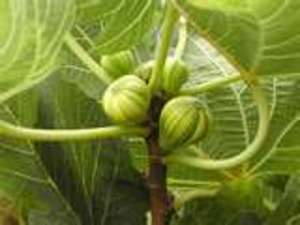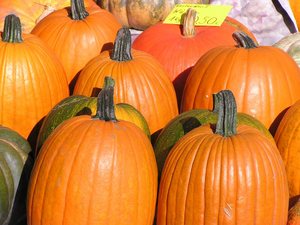Figs are the undisputed oldest mentioned fruits in the world. Mentioned in The Holy Bible in Genesis, Adam and Eve covered themselves with fig leaves when they sinned and found out they were naked.
Historical texts, thousands of years old mention figs as a major food source. That hasn’t changed in many parts of the world. Here in my area, Bexar County, Texas, they grow with little care.
Hundreds of fig varieties exist today. Many remain unnamed. Every area of the country can support fig trees.
Whether in a patio or backyard setting, figs are a beautiful and bountiful part of a garden landscape.
If having a forty-foot tall tree in the yard isn’t feasible, consider a container tree. Figs do extraordinarily well in containers.
Here’s how to have your own container fig tree.
You will need:
15-20 gallon container- light colored plastic is fine, clay or wood works well too. Make sure the container drains well. I use 15-gallon muck buckets from my DIY store with 1/8 inch holes drilled one inch from the bottom.
Lightweight potting soil mix
Fig tree- purchase a small tree at the nursery, or obtain a cutting from a friend.
Plant hardiness zone
Step One:
Look up your hardiness zone. This will tell you what fig tree varieties have the best chance in your area.
Every thing in the plant catalogs look good, however, not all growers will list the hardiness zone of the plants they sell. If a catalog doesn’t list the hardiness zone of a plant, perform an internet search of that variety. Alternatively, look in another catalog.
Local nurseries may carry fig trees. Look for a smaller plant that will grow in the container. It will be easier to transplant, feed and care for.
Step Two:
Using a loose soil mix, transplant your tree into its new container. Do not bury the trunk; instead keep the soil level with the plant’s root ball. Water well.
Since the tree is in a container, during the summer months pay careful attention to the water needs of the plant. In hotter weather, it will need more water, in colder weather, less.
Step Three:
Figs need full sun to produce fruit, but young trees can be partially shaded while they are growing. Fertilize once or twice a year (I use the first day of spring and fall) with a slow-release fertilizer.
Pruning is not necessary unless you want to keep a certain shape to the plant, or get rid of low-hanging branches.
Your tree should produce fruit within 2-3 years.
For freeze protection, wrap with an old sheet or blanket. When temperatures rise above 50 degrees, take the protection off. The container tree also does well when moved to a greenhouse or indoors for the winter. It will need to be hardened off in the spring. This means placing it outside for a few hours a day until it becomes accustomed to the weather.
Some experts say that fig trees are delicate. I would love to know exactly what they are comparing the tree to. I have a fig tree that was planted next to the foundation of my house (wrong place for a tree), that I have been trying to kill for 15 years. It won’t go. Through droughts, heat waves, storms, freezes and more it won’t die. I do not water it, fertilize it or anything and I have figs every year. Perhaps if I actually took care of it, it would die from shock. Not with my luck.
I took cuttings from my fig tree by watching which branches touched the soil and sprouted their own roots. This is called natural layering. Cutting a branch through the bark and inserting it into a bucket of soil while still attached to the tree until it roots is another method. My cutting will find itself in the front yard next spring and the misplaced parent tree will be removed.
To enjoy figs, pick them when ripe. Wash with a fruit brush, peel and eat. Cook with them, make jam from them, or dry them for later treats. Figs are also powerhouses of antioxidants, protein and fiber. But that’s another article.



